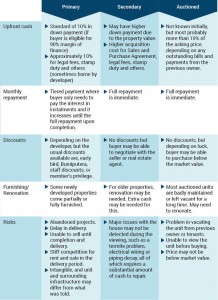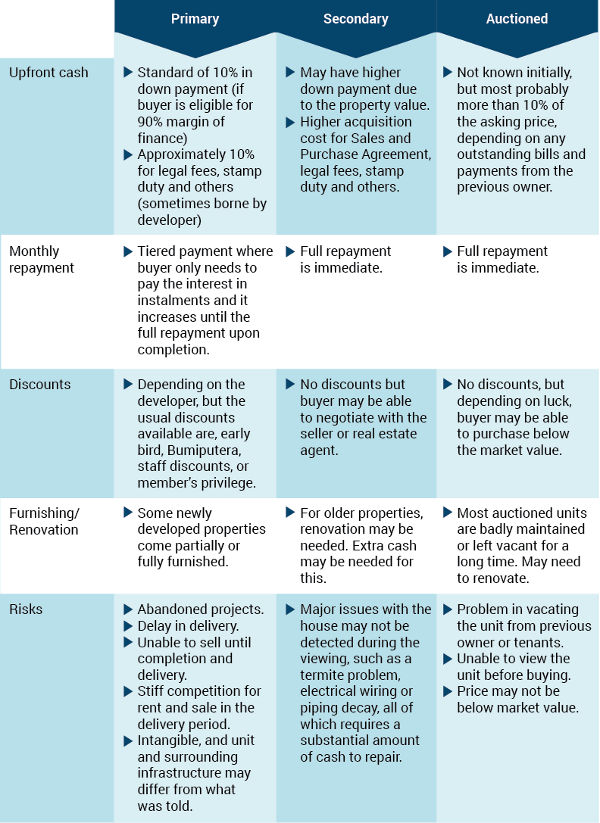Sweet success for All Seasons

The living area in the show unit penthouse in All Seasons Park, Bandar Baru Air Itam.
Belleview Group has raised the living standards in Bandar Baru Air Itam with the successful completion and strong sales of the RM700mil residential All Seasons Park and the commercial All Seasons Place projects.
The All Seasons Park has, to date, sold 95% of its 808 condominiums, leaving only 5% for sale.
Its managing director Datuk Sonny Ho said in an interview that the effort to engage internationally known consultants to advise on the architectural and landscaping design paid off.
“Bandar Baru Air Itam was previously recognised as a housing-cum-commercial neighbourhood known for its affordable and low-medium cost property.
“Now it has All Seasons Park, comprising 808 units of lifestyle condominiums and surrounded by a three-level strip mall, All Seasons Place,” he said.
Ho said of the 5% units open for sale, eight were penthouses with built-up areas ranging from 1,602sq ft and 2,333sq ft, while the remaining were standard units, with built-up areas of 856sq ft and 1,323sq ft.
“The penthouses are priced between RM1.1mil to RM1.6mil.
“One of the penthouses is the show unit, which is completely furnished.
“The standard units are priced between RM650,000 and RM800,000,” he said.
Ho said when the All Seasons Park was first launched, the selling price ranged between RM300,000 and RM350,000 per unit.
“The price for All Seasons Park has more than doubled, which indicates the popularity of the scheme as a choice residential address among Penangites,” he added.
The success story was recently featured as a cover story in Trends, an internationally known architectural and interior decoration magazine.
There are three key factors that are crucial in accounting for the success of the projects, according to Ho.
“First, there is the surrounding panoramic view facing all the four condominium towers in All Seasons Park.
“Residents get a view of the Penang Hill and the historic Kek Lok Si Temple in Air Itam.
“Secondly, All Seasons Park comes with comprehensive recreational facilities such as viewing deck, flower court with water feature, relaxation and barbecue pavilions, Olympic-sized lap pool, reflection pond, meditation lawn, wading pool, recreational park, Jacuzzi and sauna, games room, and children’s playground.
“Thirdly, All Seasons Place provides integrated lifestyle facilities for the residents.
“There are branded lifestyle retail as well as food and beverage brands such as Giant Superstore, Subway, PappaRich, The Manhattan Fish Market, Guardian Pharmacy, Chatime and 7-Eleven.
“There are 120 shop lots, which are single-entity owned,” he said.
Opened in December 2012, the All Seasons Place strip mall is designed to cater to the needs of modern living.
“It is easily accessible by the over 350,000 people living in the nearby housing estates,” he said.
The show units are open to the public for viewing from 10am to 6pm daily at the Belleview Gallery in All Seasons Place.
Source: StarProperty.my



 A few days ago, Charles, the founder of
A few days ago, Charles, the founder of  The government is open to reintroducing the Developer Interest Bearing Scheme (DIBS) for the residential property market if there are indications that the ban is creating a negative impact, said Urban Wellbeing, Housing and Local Government Minister Datuk Abdul Rahman Dahlan.
The government is open to reintroducing the Developer Interest Bearing Scheme (DIBS) for the residential property market if there are indications that the ban is creating a negative impact, said Urban Wellbeing, Housing and Local Government Minister Datuk Abdul Rahman Dahlan. Owning your first home is a great achievement, especially recently, where the prices of property exceed the income of the people. Most people start to think about buying their first home when they get married, to accommodate their growing family.
Owning your first home is a great achievement, especially recently, where the prices of property exceed the income of the people. Most people start to think about buying their first home when they get married, to accommodate their growing family.